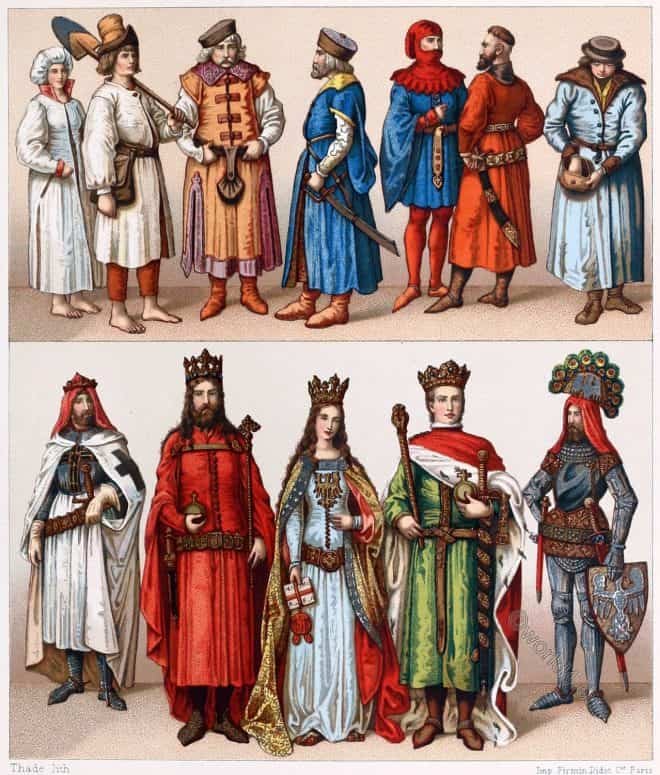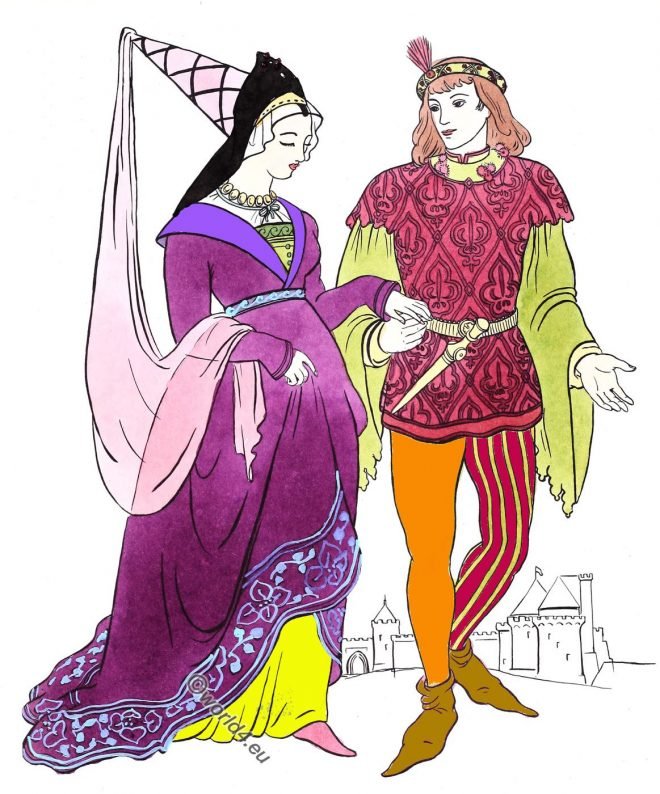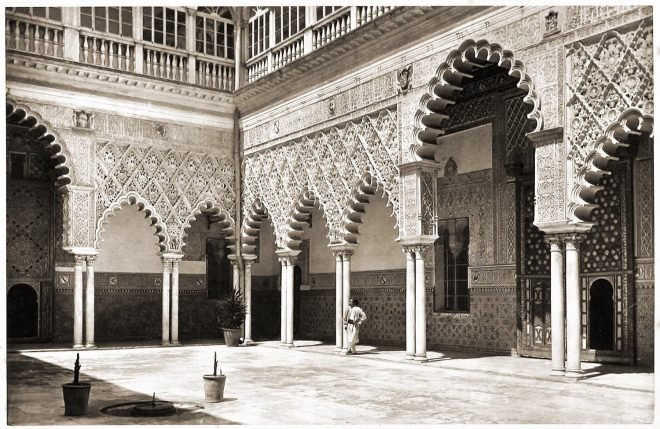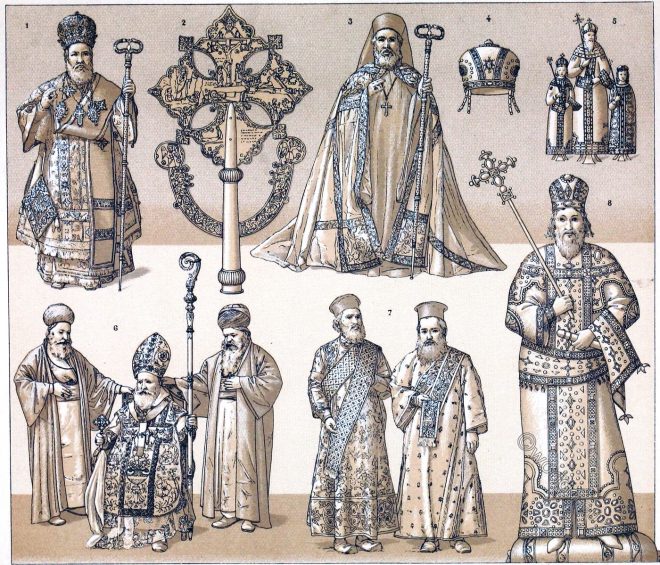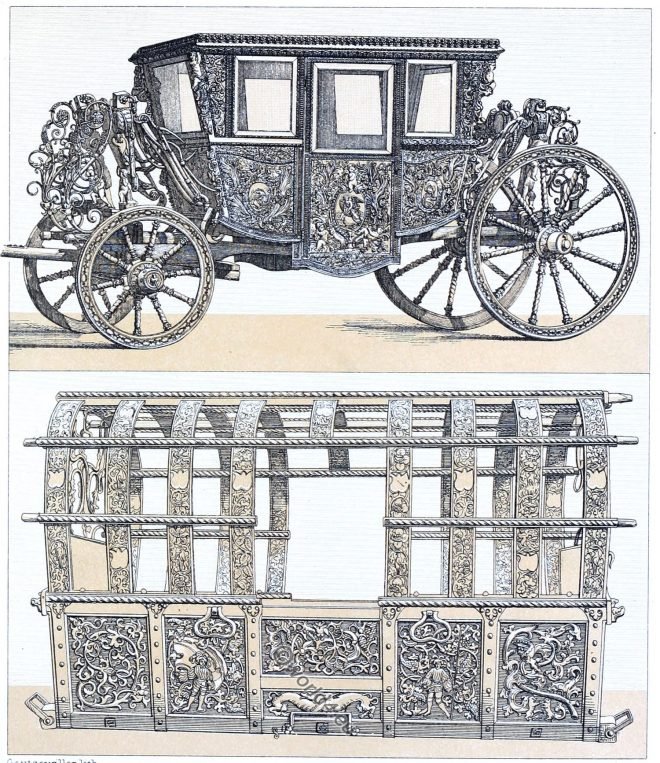A mediaeval mirror case. The subject is a favorite one with mediaeval artists, and is known as “The Assault of the Castle of Love.”
Category: 14th Century
Fashion and Costumes during the 14th century.
Polish Costumes in the Middle Ages. Typical and historical figures.
Clothing in Poland in the 14th and 15th centuries. Typical and historical figures.
The Scottish clans. The Tartan of Robert Bruce, King of Scotland.
The first Robert Bruce came to England as a knight of Normandy, in the wake of William the Conqueror. After William’s victory over Harold, he sent him to the northern parts of England to subdue them.
Burgamote Horns of the Corporations of Canterbury and Dover.
BEAUTIFUL horns of hammered and embossed bronze belonging to the Corporations of Canterbury and Dover.
The Royal Château de Blois, Loir-et-Cher.
The Palace of Blois affords an example of successive changes in the buildings, from the original castle to the period of the Renaissance.
Armaments of war from 1350 to about 1460. France. Middle ages.
War armour from 1350 to about 1460, in the period of the Hundred Years War. The development of the Bascinet helmet of the knight’s armour in the Middle Ages
Cotehardie, Houppelande and Hennin. Fashion of the late 14th century.
The two people in this plate lived very late in the 14th Century and were probably young fashionables who were up to the minute in their styles.
The Hall of the Ambassadors. Courtyard of the Alcázar, Seville.
The Alcázar of Seville is the medieval royal palace of Seville.
Byzantine Orthodox. Abyssinian. Patriarchal type. The imperial family.
Byzantium and Abyssinia. Patriarchal type. The Maronites and the Byzantine Orthodox churches. The Abyssinian Cross. Emperor of the Eastern Empire and Princes of the Imperial Family. The Tiara and the Crown.
Transport wagons, coaches and carriages in 16th and 17th century.
Transport wagons, coaches and carriages in 16th and 17th century Europe. Coaches in France. Continental carriages in the 13th and 14th century.


